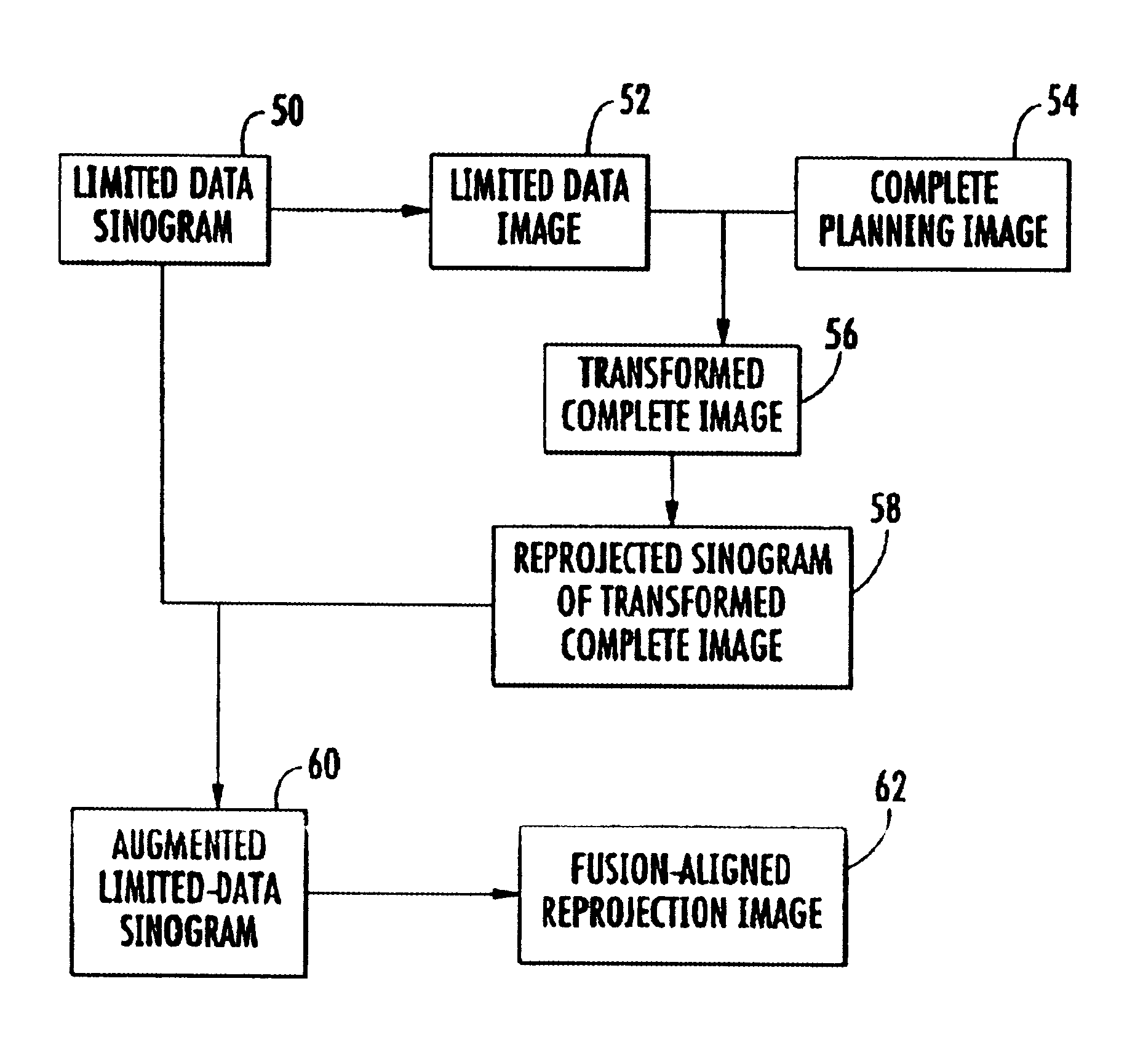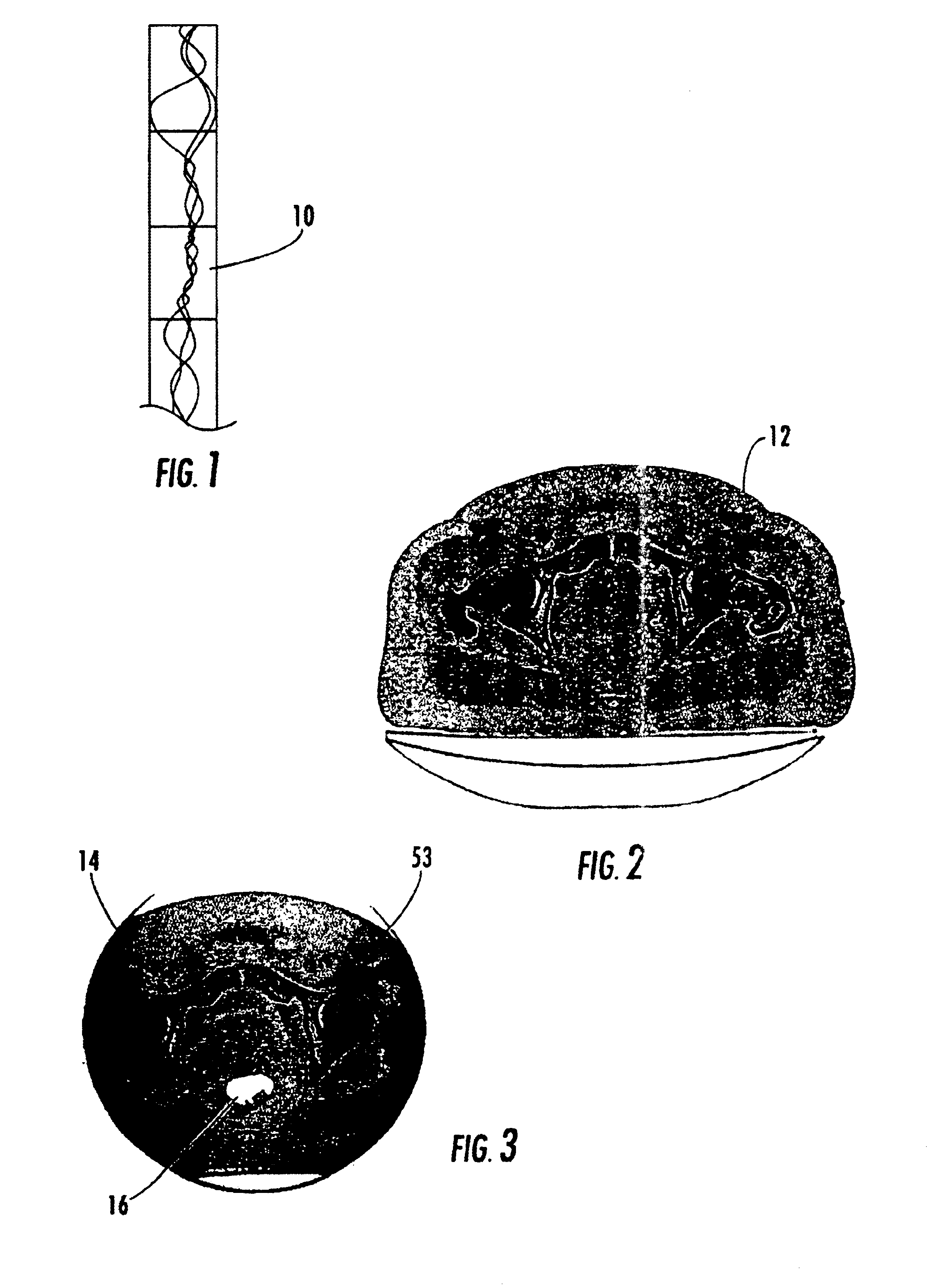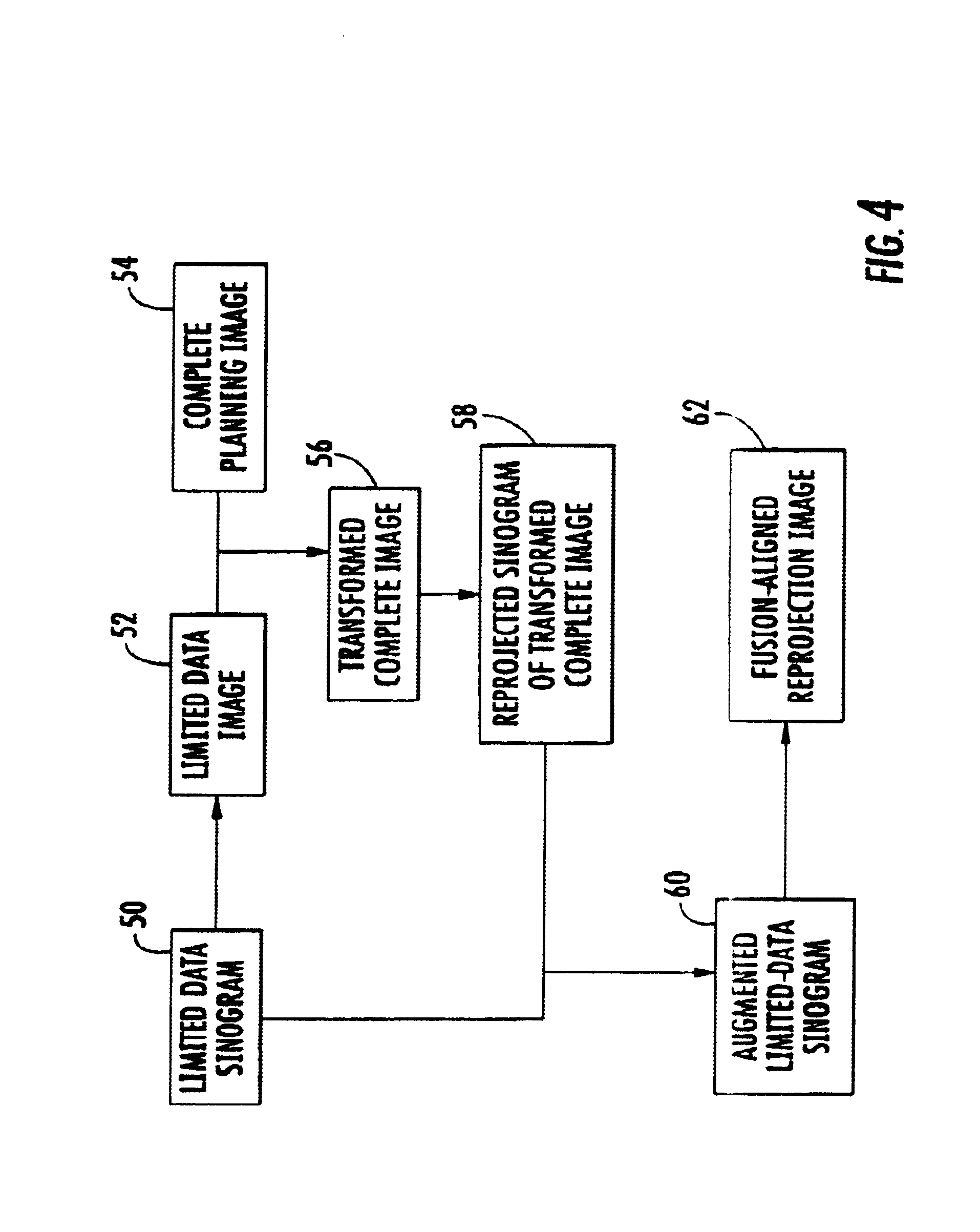Method for reconstruction of limited data images using fusion-aligned reprojection and normal-error-aligned reprojection
a limited data and reconstruction technology, applied in the direction of radiation beam directing means, radiation therapy, instruments, etc., can solve the problems of limited field of view of current patient imaging systems, especially those integrated into radiotherapy treatment systems, affecting applications, and affecting application, so as to reduce artifacts, quantitatively improve images, and increase dose calculation accuracy
- Summary
- Abstract
- Description
- Claims
- Application Information
AI Technical Summary
Benefits of technology
Problems solved by technology
Method used
Image
Examples
Embodiment Construction
[0046]Referring now to the drawings, FIG. 1 is an example of a sinogram 10 obtained from the CT image of a patient. FIG. 2 is an example of a planning CT image obtained from a sinogram similar to that shown in FIG. 1, and FIG. 3 is an example of a LFOV image from an online CT scan of the patient just prior to radiotherapy treatment.
[0047]A preferred method in accordance with a first embodiment of the present invention is shown in the flow diagram of FIG. 4. FIG. 4 represents the first embodiment process involved in creating a fusion-aligned reprojection (FAR) image from a limited data image and a complete planning image. The process begins by obtaining a limited data sinogram 50 typically representing the treatment area from a patient. The limited data sinogram 50 is preferably obtained near the time that the patient is receiving his or her radiation treatment, but may be obtained at any time. The limited data sinogram 50 is reconstructed to a limited data image 52, as seen in the e...
PUM
 Login to View More
Login to View More Abstract
Description
Claims
Application Information
 Login to View More
Login to View More - R&D
- Intellectual Property
- Life Sciences
- Materials
- Tech Scout
- Unparalleled Data Quality
- Higher Quality Content
- 60% Fewer Hallucinations
Browse by: Latest US Patents, China's latest patents, Technical Efficacy Thesaurus, Application Domain, Technology Topic, Popular Technical Reports.
© 2025 PatSnap. All rights reserved.Legal|Privacy policy|Modern Slavery Act Transparency Statement|Sitemap|About US| Contact US: help@patsnap.com



